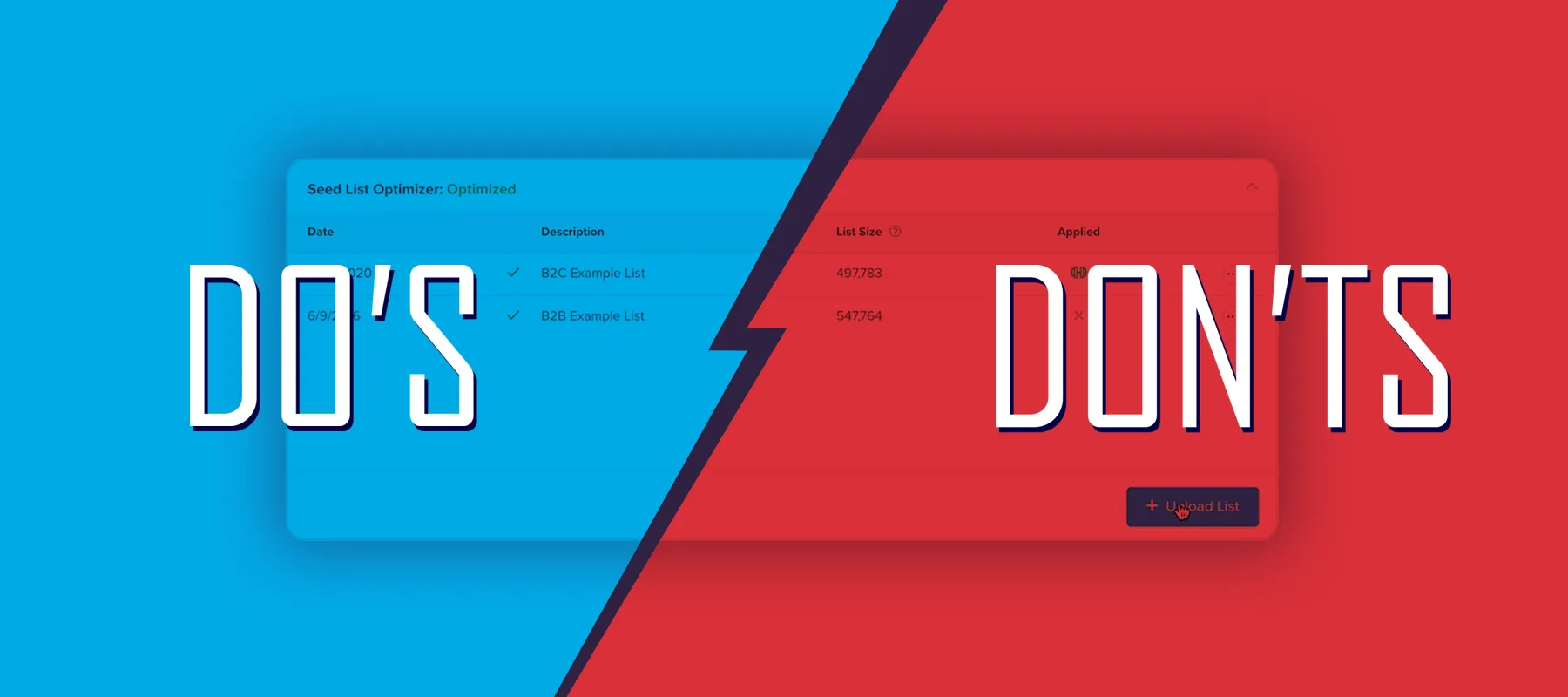
While your email service provider (ESP) can provide you with valuable metrics such as delivery rate, bounce rate, complaint rate and more, it’s important to consider the “big picture” when tracking the success of your email program. Seeding your email campaigns—or sending your campaigns to a list of test email addresses—can help you to see the big picture by allowing you to get a sense for how your emails will be perceived before you send them, as well as where your emails will land once they’ve been sent. With these insights, you’ll be able to effectively optimize and troubleshoot your email program.
Let’s break down the process of seeding a campaign.
What is a seed list?
A seed list contains real email addresses provided by your deliverability tracking platform and is used to monitor your email campaigns. By using a seed list to track inbox placement, you can view deliverability metrics with mailbox providers (MBPs) such as Gmail, Yahoo, and Microsoft.
What is a seed test?
A seed test involves sending your email campaign to the addresses on the seed list, gathering valuable data, and identifying issues before sending your campaign to your audience. The top benefit of a seed test is being able to see inbox placement metrics. These metrics determine if your campaign is landing in the inbox, the spam folder, or going missing. This information tells you if your subscribers are able to see your campaign or if it’s going straight to the spam folder.
A seed test can also provide the data to help you diagnose why your emails are hitting the spam folder or going missing. Checking the header data, authentication (SPF, DKIM, and DMARC), link validation, and design rendering can let you know what steps you need to take to improve your inbox placement rate.
Best practices for seed testing
Now that you have a better idea of what seed testing is, you should know that there are many do’s and don’ts when it comes to seed testing. Here are some of the most important things to keep in mind to get the most out of your seed tests.
Seed Testing Do’s
- Optimize your list. If 45% of your audience has a Gmail address, adjusting your seed list to have the same percentage of Gmail users will give you a more accurate representation of overall inbox placement based on your subscriber list.
- Run seed tests at a regular cadence. You’ll get the best insights when you have comparison data and can look at trends to see the big picture. If you notice an increase in spam placements for campaigns, you’ll have the historical data to help you identify if any changes occurred during that time frame that could have had an impact on your placement rates.
- Omit the seed addresses from your performance metrics. While seed addresses are real email addresses, there’s no one behind them opening and engaging with your campaigns. If you include these in your performance metrics, it may unnecessarily lower your open- and click-through rates.
Seed Testing Don’ts
- Don’t set it and forget it. Just like all emails, seed lists and tests need constant monitoring and attention to ensure they are working correctly. By monitoring your seed tests and your seed list, you can make sure the seeded emails aren’t being reported as missing due to being moved to a suppression list at your ESP because of inactivity. Plus, we are adding new seeds to the seed list all the time. You’ll receive notifications when a new seed address is available, so don’t forget to be on the lookout for these alerts and update the list accordingly.
- Don’t ignore the results. Seeing higher spam placement than expected? Since seed addresses are supposed to indicate what your real subscribers are experiencing, if our seed addresses are reporting spam, there’s a high chance your subscribers are also seeing your emails in their spam folder. Try to fix the spam placement issue as soon as possible before it turns into a bigger issue, such as a block at an MBP. If you need help getting started, Validity’s Help Center is full of resources to troubleshoot deliverability issues!
Seed testing is an important part of your overall email strategy, as it will provide you with critical insights into your campaign performance. This is just one piece of the big picture, however, and should be looked at alongside other valuable data points to help you have the best inbox placement and engagement.
Validity’s email solutions can help you adjust your test procedures and provide you with the data you need to optimize your email program. With Everest, you’ll gain detailed insights into your campaign performance, be able to identify and resolve issues, and have access to the largest global seed list in the industry. Learn more about Everest here, or to get started right away, schedule a demo.